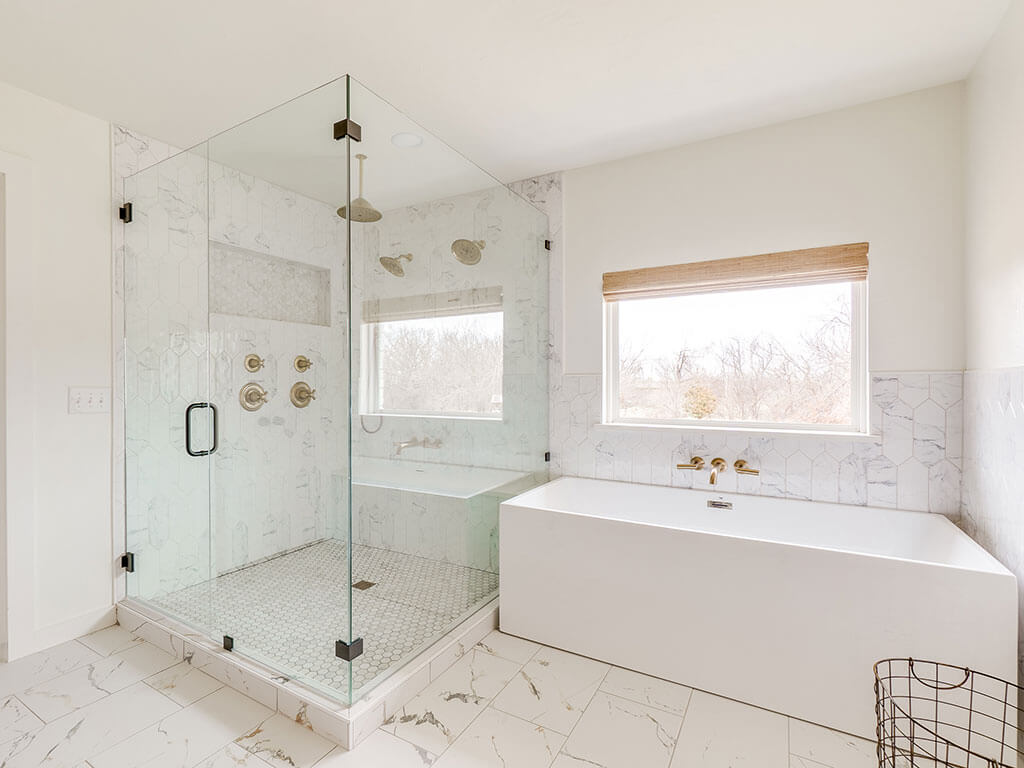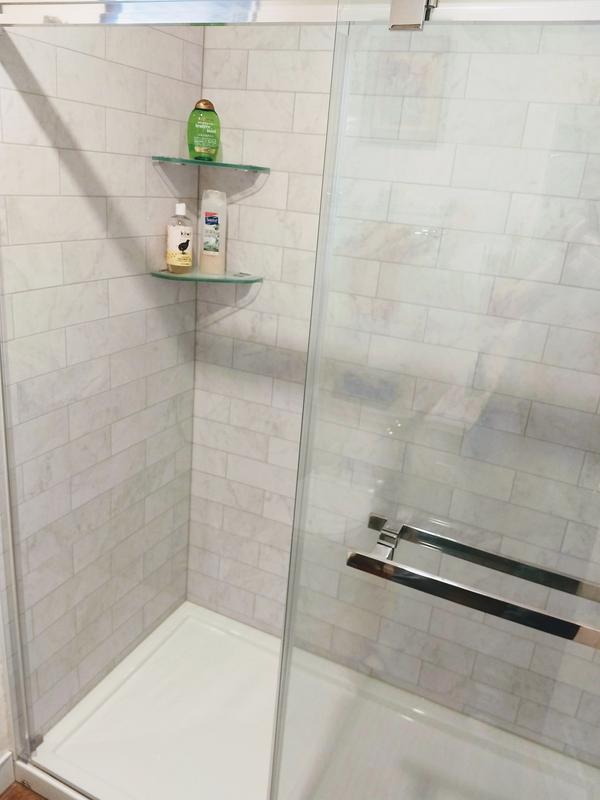
Having ADA contractors nearby can make your home more accessible. These professionals will be able to help you understand ADA regulations. If you're looking to improve accessibility in your home, consider hiring handicap remodeling contractors. These contractors can assist with modifications and installation of special equipment for those who are handicapped. Whether you need an ADA contractor for a small apartment or a large building, they can help.

A curbless shower stall is the first step in ADA-compliant bathroom accessibility. This will remove all barriers and allow for smooth operation. A wheelchair-accessible shower should have ample space and a built-in shower seat. Roll-in bathrooms may be the best option for larger bathrooms. The bathroom should have enough space for the wheelchair to pass. A roll-in bathroom should be spacious enough for the handicapped person to stand in it.
ADA-compliant bathrooms are becoming standard in many places, including NYC. This policy may not apply to buildings built after 1987. It is however worth consulting the architect. While it is not necessary, bathrooms that comply with the ADA are a great way to increase a building’s resale market value. These improvements will increase the building's resale price. It will be more appealing to the buyer.
FAQ
You can live in a house while it is being renovated.
Yes, I am able to live in a house and renovate it.
Can you live in a house while renovations are going on? It depends on the length of the construction. If the renovation takes less than two months, then you can live in your house while it is being built. However, if the renovation project lasts longer than two months, then no, you cannot live in your home while the renovation is taking place.
You should not live in your house while there is a major building project underway. This is because you could be injured or even killed by falling objects on the construction site. A lot of heavy machinery is used at the jobsite, which can lead to noise pollution and dust.
This is especially true when you live in a multistory house. In this case, the sound and vibration created by the construction workers might cause severe damage to your property and its contents.
As I mentioned before, while your home is being remodeled, you'll have to manage the inconveniences of living in temporary shelters. This means that your home won't provide all the amenities you need.
While your dryer and washing machine are being repaired, you won't be able use them. In addition to the unpleasant smells of chemicals and paint fumes, you will have to endure the noises made by workers.
All these factors can result in stress and anxiety within your family. To avoid becoming overwhelmed by these situations, it's important to plan ahead.
To avoid costly mistakes, do your homework before you make any decisions about renovating your home.
You should also seek professional help from a reputable contractor to ensure everything runs smoothly.
How much does it cost to renovate a house?
Renovations typically cost anywhere from $5,000 to $50,000. Renovations can cost homeowners anywhere from $10,000 to $20,000
Is it cheaper to build a new house or remodel an old one?
There are two choices if you are thinking of building a new house. Pre-built homes are another option. This type home is already constructed and ready for you to move in. Another option is to build a custom home yourself. To build your dream home, you will need to hire an architect.
The cost of building a new home depends on how much time and money you spend designing and planning it. It will take more effort to build a custom-built home because you'll be required to do most construction work. But, you also have more control over which materials you choose and where you place them. It might be easier to find a contractor that specializes in custom-built homes.
A new house is generally more expensive than a home that has been renovated. You'll have to pay more for land and any improvements. You will also need to pay inspections and permits. On average, the price difference for a new or remodeled property is between $10,000 and $20,000
Are permits required to renovate my home?
Yes. You will need permits to start any home renovation project. You will require a building permit as well as a plumbing permit in most cases. A zoning permit may be required depending on what type of construction you are doing.
How can I prevent being scammed when renovating my house
The best way to avoid being ripped off is to know what you are paying for. Be sure to read the fine print before you sign any contract. Blank contracts should not be signed. Always ask for copies of signed contracts.
How can you renovate your house without spending a lot of money?
These are the steps to follow when renovating your house without spending a lot of money.
-
Create a budget plan
-
Find out what materials are required
-
Pick a place for them
-
You will need to make a list of the things that you must buy.
-
How much money do you have?
-
Plan your renovation project
-
Get to work on your plans
-
Do some online research
-
Ask family and friends for their help
-
Get creative!
How do I select a competent contractor?
Ask your family and friends for recommendations when choosing a contractor. Look online reviews as well. Look online for reviews to ensure the contractor you choose is experienced in the construction area you are interested. Check out references and ask for them to provide you with some.
Statistics
- ‘The potential added value of a loft conversion, which could create an extra bedroom and ensuite, could be as much as 20 per cent and 15 per cent for a garage conversion.' (realhomes.com)
- According to the National Association of the Remodeling Industry's 2019 remodeling impact report , realtors estimate that homeowners can recover 59% of the cost of a complete kitchen renovation if they sell their home. (bhg.com)
- They'll usually lend up to 90% of your home's "as-completed" value, but no more than $424,100 in most locales or $636,150 in high-cost areas. (kiplinger.com)
- It is advisable, however, to have a contingency of 10–20 per cent to allow for the unexpected expenses that can arise when renovating older homes. (realhomes.com)
- On jumbo loans of more than $636,150, you'll be able to borrow up to 80% of the home's completed value. (kiplinger.com)
External Links
How To
How do I plan for a whole house renovation?
Planning a whole house remodel requires careful planning and research. There are many things you should consider before starting your project. It is important to determine what type of home improvements you are looking to make. There are several categories you can choose from, such as bathroom, kitchen, bedroom, living area, and so on. Once you've chosen the category you want, you need to decide how much money to put towards your project. If you have never worked on homes, it is best to budget at most $5,000 per room. If you have more experience, you might be able spend less.
Once you have established how much you are able to afford, you will have to decide on how big a job to do. If your budget only allows for a small renovation of your kitchen, you will be unable to paint the walls, replace the flooring or install countertops. You can do almost everything if you have enough cash for a full-scale kitchen renovation.
Next, you need to find a contractor who is experienced in the type project that you want. You will be able to get great results and avoid a lot more headaches down in the future. Once you have found a reliable contractor, it is time to start gathering supplies and materials. You may need to purchase everything from scratch depending on the size and scope of your project. However, it is possible to find everything you need in a variety of shops that sell premade items.
After you've gathered all the supplies you need, it's time to begin making plans. First, you'll want to draw up a rough sketch of where you want to place furniture and appliances. The next step is to design the layout of the rooms. Make sure that you leave space for plumbing and electrical outlets. You should also place the most frequently used areas closest to the front door, so visitors have easy access. Finally, you'll finish your design by deciding on colors and finishes. In order to avoid spending too much money, stick to neutral tones and simple designs.
Once you have completed your plan, it is time to begin building. It's important that you check the codes in your area before you start construction. Some cities require permits while others allow homeowners to build without one. When you're ready to begin construction, you'll first want to remove all existing floors and walls. You will then lay plywood sheets to protect your new flooring. Then, you'll nail or screw together pieces of wood to form the frame for your cabinets. Lastly, you'll attach doors and windows to the frame.
When you're done, you'll still have a few finishing touches to do. You will likely need to cover exposed wires and pipes. To do this, you'll use plastic sheeting and tape. Also, you will need to hang mirrors or pictures. Keep your work area tidy and clean at all times.
These steps will help you create a functional, beautiful home that is both functional and attractive. Now that you know how to plan a whole house remodeling project, you can go ahead and get started!